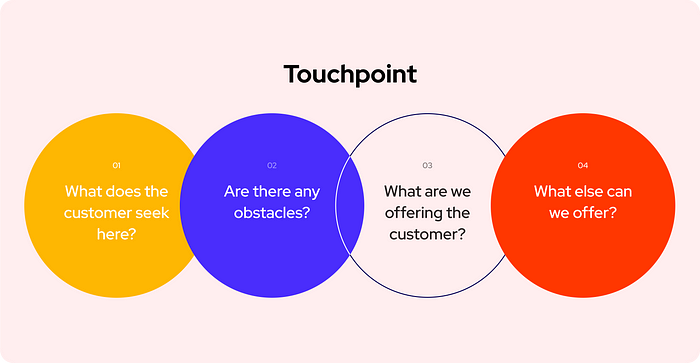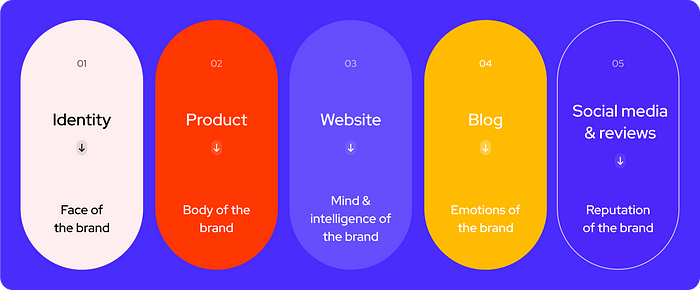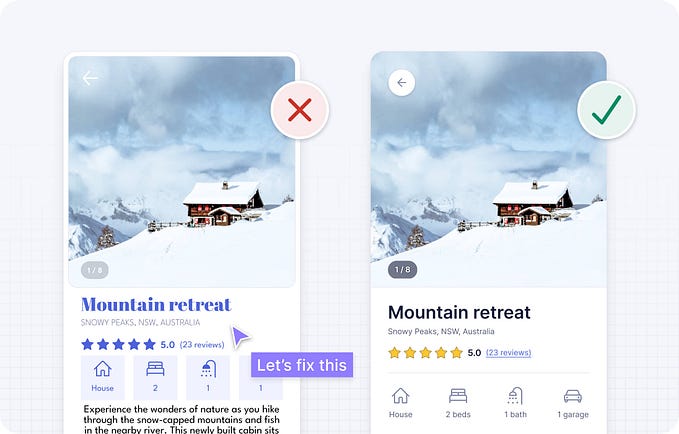Strengthen Your Brand: 10 Steps to Optimize Customer Touchpoints
A guide to using touchpoints in brand promotion

What is this brand? Can I trust it? What will I gain from this purchase? Will I come back for more? These are some of the questions swirling around in a customer’s head when he or she arrives at a touchpoint.
The customer experiences each touchpoint separately, making a decision on whether to go on using the brand. No wonder touchpoints are known as “moments of truth”! Every touchpoint is a source of income or loss for the company.
It is in your power to strengthen and “magnetize” your touchpoints into one solid chain.
This will significantly impact your brand prospects and recognition, expand your audience, and boost customer loyalty.
“Pfft, I don’t need any touchpoints to know that we need to update the logo and improve our website!” That kind of approach is exactly what prevents people from seeing the objective picture and giving their customers what they need when they need it (and it might be something entirely unrelated to the logo or the website). The touchpoints are links in a chain. If the chain is broken, there’s no use polishing individual links.

1. Start with the basic touchpoint
The basic touchpoint is the crucial link in the chain. It’s known as the Zero Moment of Truth and comprises three critical parts:
- brand positioning;
- brand ideology;
- brand book.
If these components are missing, customers will have trouble perceiving the right brand image at every subsequent touchpoint. Their impressions will be vague and chaotic. The brand will be neither memorable nor recognizable.
Don’t start with the other touchpoints until you’ve covered the bases.

2. Identify the key links
Any brand has plenty of customer touchpoints. They include interfaces and processes, social media platforms, ads and reviews, places and situations where people encounter the brand, and so on.
Strategic touchpoints should be plotted on a customer journey map (CJM). It describes the path from the first encounter with the brand to making a purchase and giving feedback.
Plot every touchpoint on the CJM and rate each of them objectively. Do it by surveying your customers, employees, friends and acquaintances. Travel the customer path step by step, keeping an eye out for any obstacles. Ideally, use testers.
Ultimately, your touchpoints will fall into one of three categories: strong, weak, and failed (the lowest-rated ones).
Identify the essential points you want to “magnetize.” But don’t start improving them just yet!
Each touchpoint is a chance to grow your audience, boost recognition, attract loyal customers, and become a famous brand.

3. Locate the “black holes”
The more platforms for the customer to communicate with the brand, the better. However, the quality of these touchpoints always matters more than the number. On closer examination, many of these points are actually black holes. These are negative customer experience zones. They damage the brand image, driving the customers to competitors.
An unmemorable brand identity, an unattractive-looking product, a confusing website, poor customer service, an overcomplicated ordering procedure, a lack of feedback, numerous hurdles, intrusive ads — all these and similar things are black holes. Each of them costs you customers. Your job is to locate these holes, and if you can’t turn them into stars, then at least neutralize them.

4. Prioritize
A common mistake is rushing to fix the key touchpoints. In fact, that’s not where you should start.
The top priority is eliminating black holes and ensuring the chain is unbroken.
If you lose customers at Point B, there’s no use improving Point C. They won’t get there anyway. Start by testing all the problem spots and identifying the reason for negative experiences. It may be a tiny thing, but it can still break the chain (i.e. make the customer leave).
Listing priorities is important and necessary. Keep them in sight: this is your to-do list. But until the path along the chain is clear and all the obstructions have been removed, do not start improving the critical touchpoints. Remember it when you prioritize.

5. Analyze the chain
Here are some simple questions to understand whether every link in the chain is functional:

There are certain demands for every touchpoint. No adequate testing is possible unless the demands are clearly stated. You must know exactly what you want to offer at every point and what the customer gets in reality. Are you meeting the customer’s expectations? Note the objective answers to these questions.
For comparison, complete the entire customer journey on a competitor’s website. This will help you understand the whole thing better and inspire new ideas on improving your touchpoints.

6. Formulate your task
The findings of your chain analysis must be recorded in any form convenient for your business. The most important things to see are:
- customer journey (mapped);
- list of all touchpoints;
- key points ranked by priority;
- touchpoint testing parameters (what the points need to function properly);
- current state of touchpoints;
- optimization plan;
- budget;
- deadlines;
- persons responsible.
This is the basis for your subsequent actions. Amend the record as you receive new information.

7. Eliminate the obstacles
Every touchpoint either strengthens or damages your brand. Damage control is your top priority.
Every single point in the chain must work in a way that does not hinder the customer, so that they can smoothly move on to the next one. This is the barest minimum of what you need to ensure. Only then should you start thinking about making the key points attractive.

8. Stay true to yourself
The brand must not lose its face at any touchpoint. It can’t become bland, unresponsive, or unrecognizable. Every interaction reflects the brand values and ideology.
Every touchpoint is a chance to showcase the different aspects and possibilities of your brand.
Use each point differently following the general strategy.
Touchpoints match how people see the brand in its various aspects. Subconsciously, it goes something like this:

Strengthen the things that show your brand’s best side at every point: its face, mind, quality, reputation, and so on. Different platforms are useful for showcasing different aspects of the brand: its idea, its visual attractiveness, the quality of the product, a solution to the customer’s problems, and the experience of customer-brand interactions in stories and reviews.

9. Magnetize the touchpoints
Magnetizing a touchpoint means making it especially attractive to the customers, making them want to relive the experience. At every key point, everything must be better than what the competitors are offering: more convenient, better-looking, smarter, more valuable, useful and functional. Surprise your customers by exceeding their expectations!
A magnetic touchpoint is one that’s better, more useful, and more interesting than its competing counterpart. Attraction is achieved through:
- a special brand idea;
- a better solution to the customer’s problems;
- effective customer motivation;
- a unique and aesthetic design.
A brand’s magnetism is closely linked with its idea, emotions, and visuals. People love with their eyes first, hearts second, and minds last. Use professional designers and marketers to win this love. :)

Good design turns your brand into a magnet. Brand identity, the appearance of your office, employee uniforms, merch, the packaging and appearance of the product — all this stuff is so important that customers would be willing to overlook your brand’s flaws and defects. Here’s some typical feedback: “We were very excited to get the new iPhone, even though it was a long wait and the clerk was rude”; “The new vacuum cleaner is worse than the old one, but it looks so gorgeous I wouldn’t change it for any other.”
High-quality design is the best magnet.
Most touchpoints are based on visual impressions. A good design makes the brand cohesive, recognizable, and memorable. Such design reflects the positioning of the brand, helping it stand out from the competition and showcase its uniqueness, relevance, and responsiveness.

10. Keep moving to stay relevant!
With touchpoints, your work must be continuous and consistent. Keep your finger on the pulse, stay relevant, do not let your brand identity become obsolete. Always stay on top of the game: address your customers in their own language, see the world through their eyes, keep track of what goes on, rise to new challenges.
When working on your touchpoints:
- be consistent;
- stay relevant;
- promptly respond to every challenge;
- update regularly;
- improve every interaction.
Touchpoint design is an integral part of branding. Touchpoints must not be left to their own devices. If you don’t work on them, they will turn into dead zones and drag your brand down. These points are useful aids for focusing your branding efforts. Improve your points and you will see your audience and your profits grow in no time!








